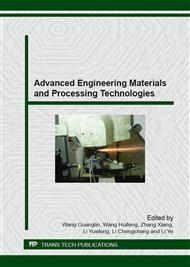p.347
p.353
p.359
p.365
p.370
p.379
p.385
p.391
p.396
Micro-Treatment Mechanism Study on Ionic Soil Stabilizer Improving Clay
Abstract:
In order to study the treatment mechanism of the ionic liquid soil stabilizer, a series tests were performed for a typical soil, the red-brown clay. The basic physical parameters of typical soil were conducted by variety of tests, including particle size analysis, crucial water content coefficient, loss on ignition, organic matter content, etc. Furthermore, the treatment mechanism of the ionic soil stabilizer was analyzed, involving PH, conductivity, plasma emission spectra, scanning electron microscopy, X-ray diffraction and BET test. The results indicate: Firstly, the ionic soil stabilizer is a sulfonated oleoresin with the features of water soluble, high conductivity and strongly acidic, which exchanged with cations adsorbed on the surface of clay particles to reduce the thickness of hydrated film and the electric double layer thickness. Secondly, it reduced the mutual repulsion energy between soil particles and made the flaky particles of clay minerals contact closely. Finally, it made the particles of clay be close to each other and gradually formed larger particles. Hence, the clay became denser. Therefore, the research provided a theoretical foundation and practical basis for the wide application of the ionic soil stabilizer in China's highway construction.
Info:
Periodical:
Pages:
370-375
Citation:
Online since:
October 2015
Authors:
Keywords:
Price:
Сopyright:
© 2016 Trans Tech Publications Ltd. All Rights Reserved
Share:
Citation:


